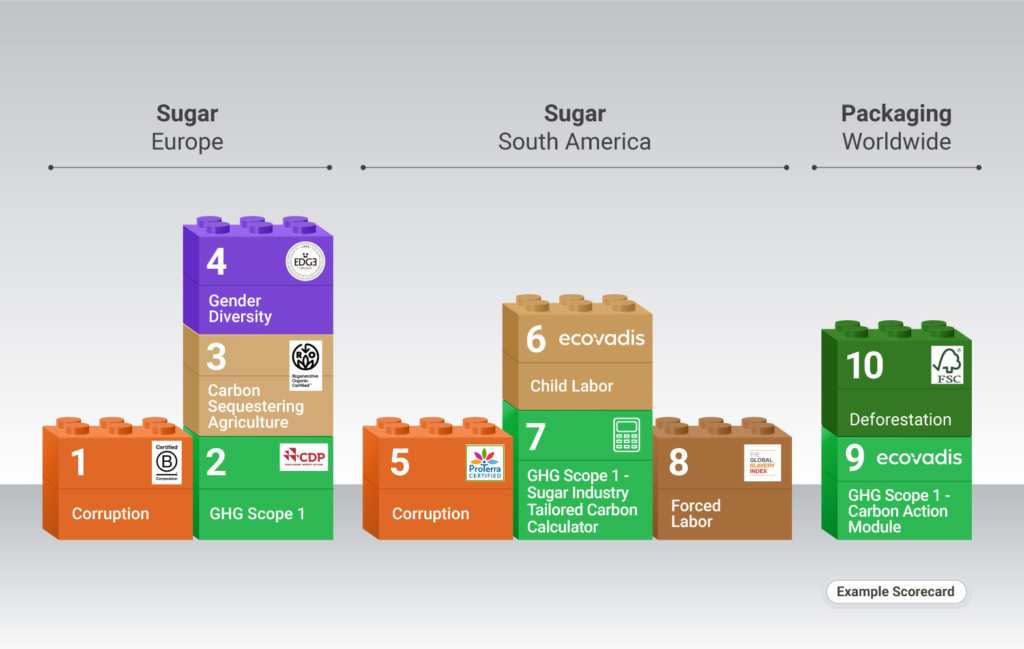Let’s talk about sustainability.
A new cumbersome task put on to procurement and supply chain professionals. It seems simple at first; let’s assess how sustainable our suppliers are – that’s just putting one new parameter next to financial risk, cyber security, and so on – how hard can it be? You dive into it, and you realise that sustainability is an umbrella term for hundreds of parameters from deforestation and water stewardship to diversity and human rights. It is already getting a bit overwhelming, you try to find someone who has defined a set framework that you can use. You realise that there are hundreds of standards out there, and everybody defines sustainability differently. You also realise that whatever framework you choose, you probably need to make adjustments between your different procurement categories – one size doesn’t really fit all. Phew, back to being overwhelmed. You decide on one framework or certificate, and push adding nuance to a later date, and start asking your suppliers for this information. You quickly get pushback. Suppliers are sending you other certificates, text responses that don’t fit your framework, and some are telling you that they really don’t have the bandwidth to respond because they’re suffering from survey overload, or they don’t have the data you’re asking for. Suddenly, that one sustainability parameter has become a full-time job, and you still don’t feel like you have the topic under control. Sounds familiar?
One of the problems with evaluating the ‘sustainability’ of your suppliers, is that ‘sustainability’, ‘circularity’, ‘regenerative farming’ or whatever we call it, are umbrella terms for many different overlapping parameters. Because we’re pushing to simplify it to one word, we’ve created a wild west of thousands of different frameworks, definitions, and data sources. A big jigsaw puzzle that we’re struggling to put back together.
What if we thought about it from the opposite direction. What if we instead of trying to agree on one definition for sustainability, we broke sustainability into hundreds of lego blocks, each representing a concrete topic or metric – like GHG emissions, deforestation, or child labour. What if every certificate and data source was broken into these lego blocks as well, and we could easily mix and match data according to the blocks that we’ve chosen to evaluate a given group of suppliers on?
This modular approach to responsible sourcing could ease the burden of both buyers and suppliers. Buyers would be able to work across data sources and reporting frameworks. They would free up time spent researching different definitions. They could easily assemble the data blocks they need, and phase it in over time so they don’t need to collect everything at once. It would also make it easier to share data within an industry, and pool resources for data collection and audits. Suppliers would be able to reuse responses and data requests across customers, and they would only be asked for the lego blocks that are highly important to their size, industry, spend and geography.
Look at the lego blocks below. This is an example of the modular approach to responsible procurement of a confectionery company. They procure sugar from European as well as South American producers. As South America is a high risk area for child and forced labour, they add those lego blocks to the scorecard, when assessing suppliers. This risk is much smaller in Europe, so the company doesn’t need to have the same assurances when it comes to the procurement of beet sugar from Northern Europe – however, here gender diversity is on the agenda.
The lego blocks can be mixed and matched based on risk and materiality. Similarly, multiple data sources can be mixed and matched as appropriate. The benefit of this modular approach is a deeper, more meaningful and transparent understanding of the data sources as well as greater efficiency. Buyers can more swiftly get the information they need and suppliers are spared from multiple audits and questionnaire overload. Ultimately, we have transcended the standards and frameworks by cutting them into lego blocks and putting them back together, in a way that lets us assess exactly what is important – and only that.
Key:
Colours represent the sustainability parameter that you want to assess – while each of the figures represent a different set of parameters that are important to the procurement of that specific category.

